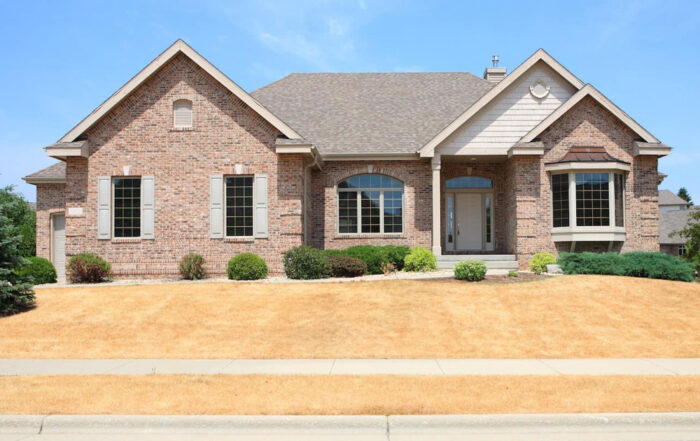Why Fort Worth Homes Are Prone to Foundation Problems (And How to Fix Them)

When you picture a cozy Fort Worth home, you probably imagine warm brick facades, inviting porches, and the smell of backyard BBQs drifting through the air. It’s the kind of place where kids ride their bikes until the streetlights come on and everyone knows the best spot for breakfast tacos. But underneath all that charm lies a problem that’s all too familiar for many Fort Worth homeowners: foundation trouble.
We’re talking cracks zigzagging across your walls, floors that tilt like a carnival ride, and doors that refuse to budge like they’re holding a grudge.
So, what’s going on with Fort Worth homes and foundation issues? Let’s dive into it—without the technical jargon.
Why Fort Worth Homes Have Foundation Problems (Spoiler: It’s Mostly the Dirt’s Fault)
1. Clay-Based Soil: Nature’s Drama Queen
Let’s start with the ground beneath your feet—literally. Fort Worth sits on clay-rich soil, and while that might sound harmless, it’s actually the soil equivalent of a mood swing.
Clay soil expands when it gets wet and contracts when it dries out. This constant swelling and shrinking plays tug-of-war with your home’s foundation. One rainy season and it’s like the soil’s trying to hug your foundation into submission. Come summer, the ground dries up and pulls away, leaving gaps and uneven support. Cue: foundation cracks, shifting, and sinking.
Think of it like your foundation doing yoga against its will—bend, stretch, twist—and not in a fun, stress-relieving way.
We know this dirt drama better than anyone, because we literally nerd out over soil. That’s right—we’re proud #DIRTNERDS, and our team of Texas soil experts understands exactly how this moody clay behaves and how to keep it from wrecking your home.
2. Wild Weather Mood Swings
Fort Worth is no stranger to weather extremes. One minute it’s raining cats and dogs, and the next it’s hotter than a brisket smoker on game day. These weather shifts mess with the moisture levels in the soil, which, you guessed it, messes with your foundation.
When the moisture content in the ground changes dramatically with the seasons, it creates stress that eventually leads to shifting, settling, and cracking. Your home may be tough, but even it can’t fight off Mother Nature’s constant mood changes without a little help.
3. Poor Drainage: The Silent Saboteur
Water is sneaky. If it’s not properly drained away from your home, it’ll find its way into all the wrong places—including the soil around your foundation.
Without good drainage, water starts pooling near the base of your home, soaking the clay soil and causing it to expand unevenly. This creates pressure on some parts of the foundation while others remain dry and stable, which leads to—you guessed it—cracks and structural shifts.
Whether it’s because of clogged gutters, a badly sloped yard, or a missing French drain, poor drainage is like the frenemy who seems harmless but causes all sorts of drama behind the scenes.
Warning Signs: Is Your Fort Worth Home Crying for Help?
Now that we know why these issues happen, how do you know if your home is trying to signal an SOS?
Here are a few classic signs of foundation problems:
- Cracks in walls or floors – Especially around door frames or windows. These aren’t just ugly—they’re telling you the house is moving.
- Sticking doors and windows – If you have to shoulder slam a door just to close it, something’s off.
- Sloping or bouncy floors – Your floor shouldn’t double as a ski slope or trampoline.
- Gaps between the ceiling or floor and walls – These are not “character features.” They’re warning signs.
- Cracked exterior bricks – If your house’s outer shell is cracking, it’s time to pay attention.
Okay, So Your Foundation’s a Bit Wobbly… What Now?
Take a deep breath. Foundation problems might sound scary, but the good news is they’re fixable—and sometimes even preventable. Here’s what to do:
1. Call in the Pros (Seriously, Don’t DIY This)
Step one: Call in a trusted repair team—like us. As a foundation repair company that specializes in Fort Worth foundations, we know exactly what your home is up against. Foundation issues aren’t a DIY project—you’ll need more than a YouTube tutorial and a trip to the hardware store. We’ll assess the problem, recommend the right fix, and get it done right the first time. Your future self (and your house) will thank you.
2. Drainage, Drainage, Drainage
If your home doesn’t have proper drainage, foundation issues are only a matter of time. Here’s what you can do:
- Install or repair gutters.
- Make sure downspouts extend away from your house.
- Slope your yard away from the foundation.
- Install a French drain if necessary.
Basically, think of water like a nosy neighbor: keep it far from your house.
3. Keep the Soil Moist—but Not Too Moist
Remember our friend the clay soil? It hates inconsistency. In the hot, dry months, the soil can shrink away from your foundation, so lightly watering the soil around your house can help it stay stable. But don’t go overboard—you’re not trying to grow rice in your front yard.
A consistent watering schedule with soaker hoses during summer months can do wonders for stabilizing the ground.
4. Get Regular Foundation Inspections
Foundation problems don’t just appear overnight—they build up slowly. That’s why it’s smart to schedule professional inspections every couple of years. Think of it like a check-up for your house. Catching issues early means cheaper fixes and fewer headaches down the road.
Can You Prevent Foundation Issues Altogether?
Not always, but you can make your home a lot less likely to have them. Here’s the quick checklist:
- Grade your yard so water flows away from your home.
- Keep your gutters clean and functional.
- Use soaker hoses to maintain consistent soil moisture.
- Fix drainage issues fast—don’t procrastinate.
- Schedule regular foundation inspections (yes, even if everything looks fine).
Final Thoughts: Fort Worth Charm with a Solid Base
Fort Worth has a lot going for it—friendly neighbors, vibrant culture, and homes full of character. But all that charm sits on some pretty finicky soil. Foundation problems are common, yes, but they’re not the end of the world.
The key is to be proactive. Understand the warning signs, take drainage seriously, and when in doubt, bring in



